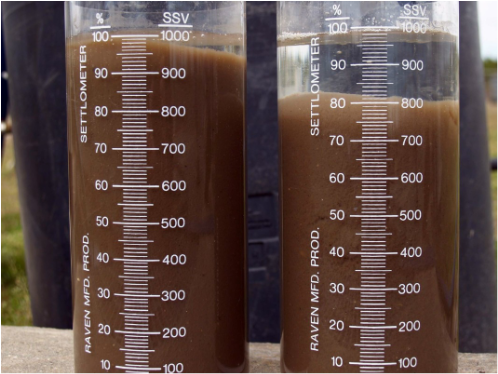
We often generate SV30 and SVI numbers in our monitoring - but rarely think about how to interpret the number. Remember the SV30 test is designed to predict secondary clarifier performance in suspended growth systems (normally activated sludge). While usually overlooked, I as operators questions about supernatant turbidity & fines remaining after the sludge settles. Additionally, does the sludge float after sitting for 2 hours due to denitrificiation? Another issue could be fats, oils, and grease causing a scum (floating sludge) layer on the top after 30 minutes.
For general guidance on how SVI relates to sludge settling characteristics:
SVI (ml/g) Sludge Settling & Compacting Characteristics
< 80 Excellent - but can leave "fines" if sludge age is too long
80 - 150 Normal zone - I usually suggest targeting 100 - 120 for best water
> 150 Poor settling - need to check for filaments or less likely viscous bulking

 RSS Feed
RSS Feed